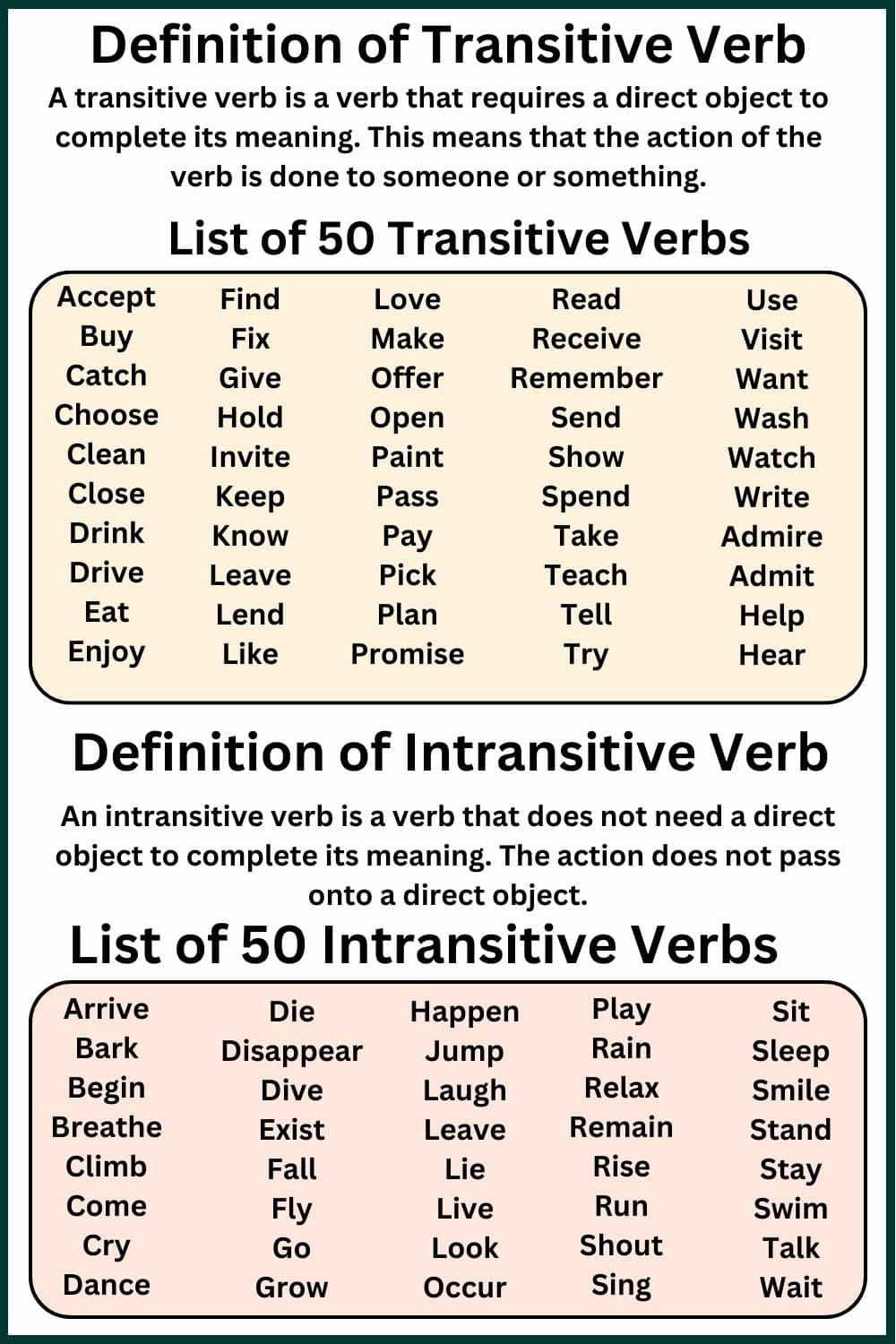Verbs are essential components of sentences that express actions or states. They can be classified into transitive and intransitive verbs based on their usage in a sentence. Understanding the difference between these two types of verbs is crucial for constructing grammatically correct sentences.
Transitive verbs require an object to complete their meaning, while intransitive verbs do not need an object. This distinction plays a significant role in sentence structure and comprehension.
Transitive vs Intransitive
Transitive verbs are action verbs that are followed by a direct object, which receives the action of the verb. For example, in the sentence “She ate an apple,” the verb “ate” is transitive because it has a direct object “an apple.” The action of eating is directed towards the apple.
In contrast, intransitive verbs do not require a direct object to complete their meaning. They express an action or state that does not transfer to an object. For example, in the sentence “He sleeps peacefully,” the verb “sleeps” is intransitive as it does not require an object to make sense. The action of sleeping is not directed towards any specific object.
Some verbs can function as both transitive and intransitive depending on how they are used in a sentence. For example, the verb “run” can be transitive in the sentence “She runs a marathon” (where “a marathon” is the direct object) and intransitive in the sentence “He runs every morning” (where there is no direct object).
It is important to pay attention to the verb’s relationship with the object in a sentence to determine whether it is transitive or intransitive. Understanding this distinction will help you construct clear and concise sentences.
In conclusion, transitive verbs require a direct object to complete their meaning, while intransitive verbs do not need an object. By recognizing the difference between these two types of verbs, you can enhance your understanding of sentence structure and improve your writing skills.
